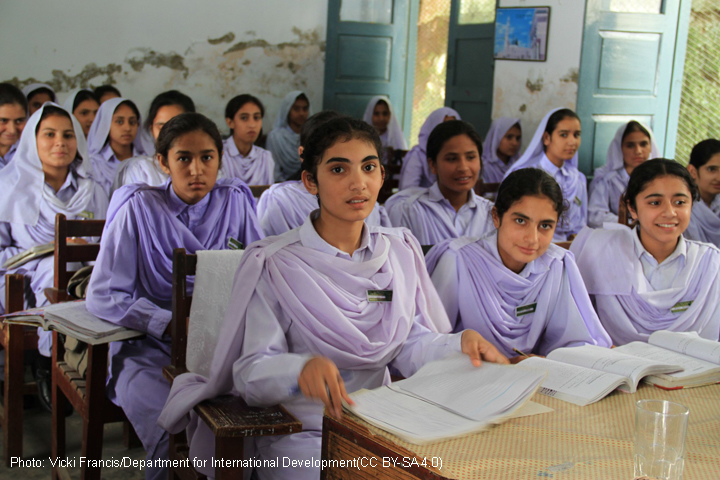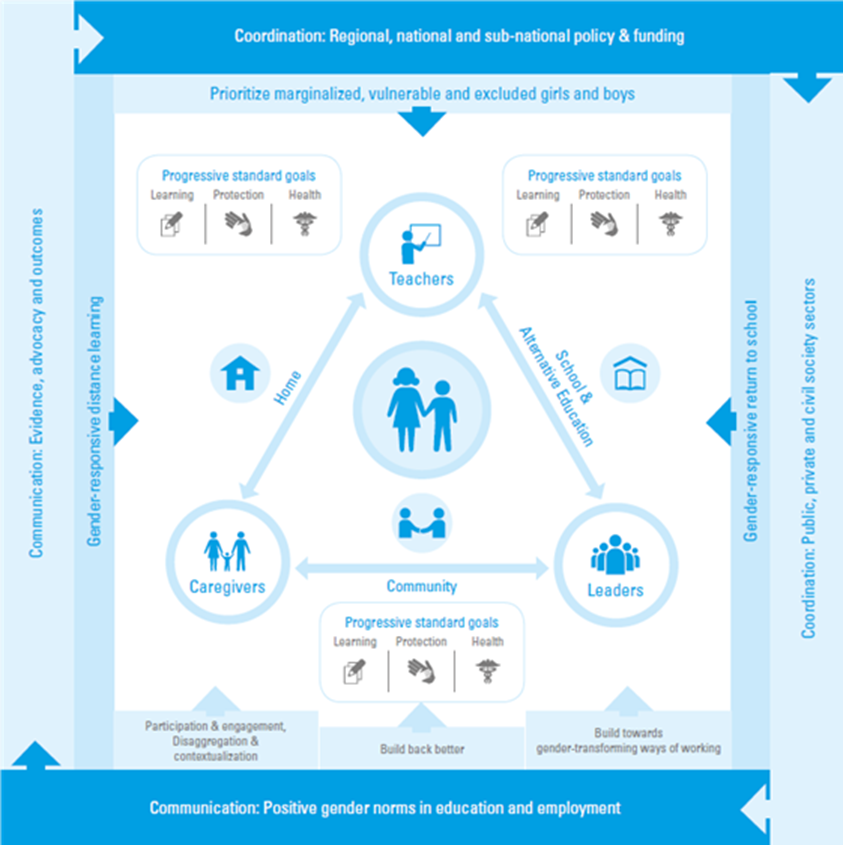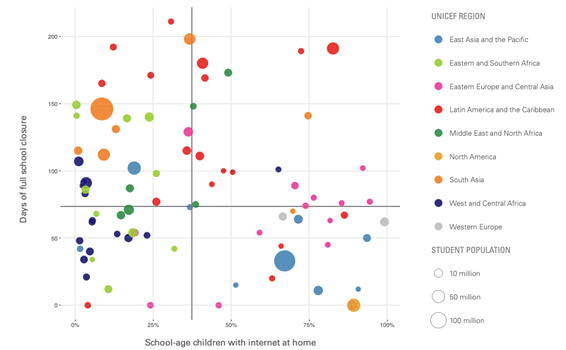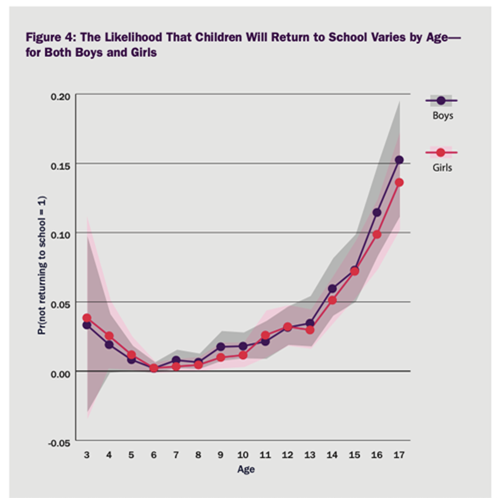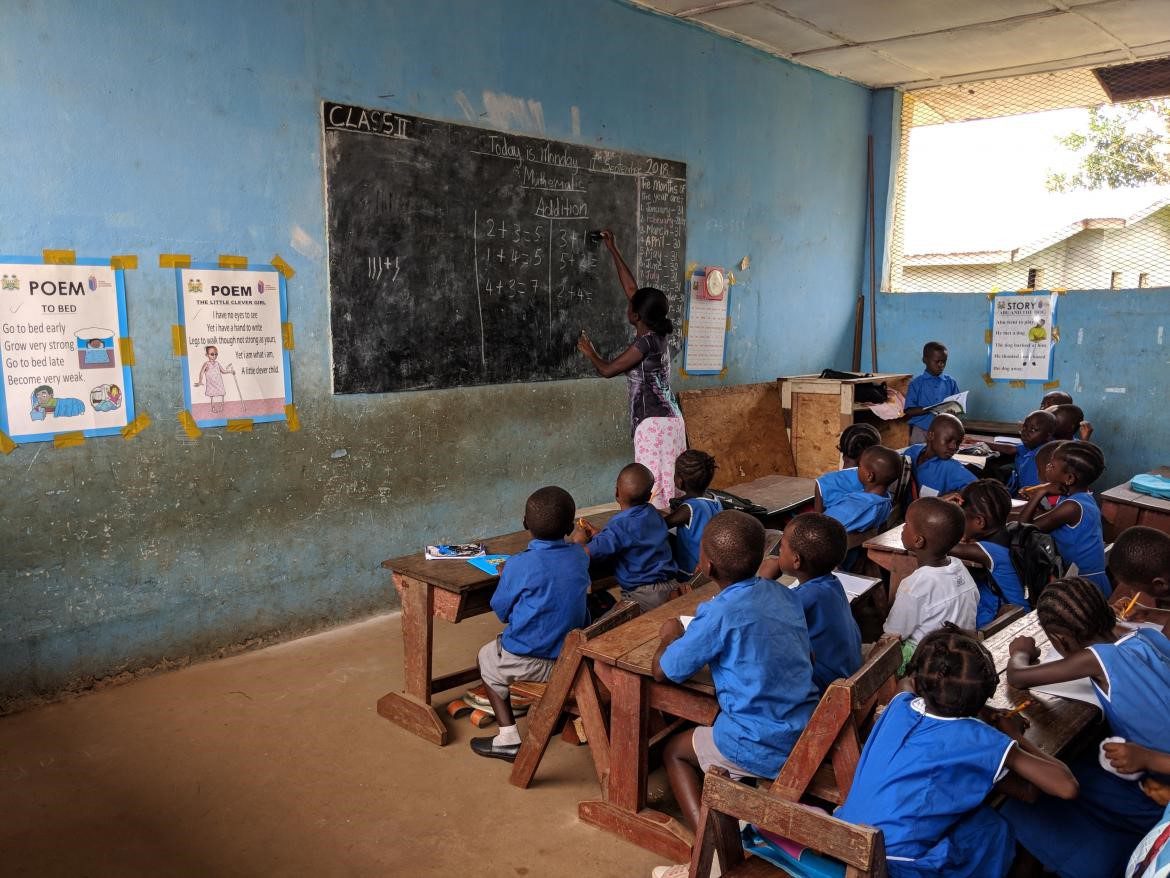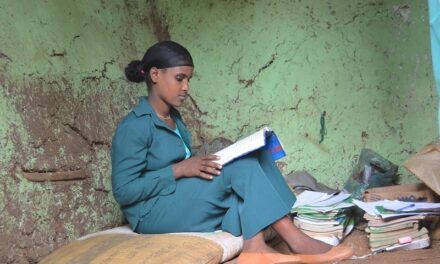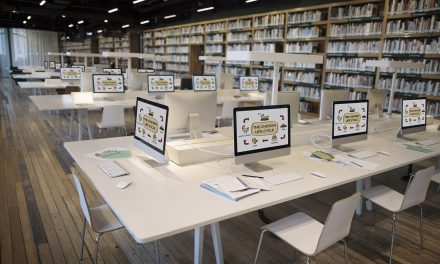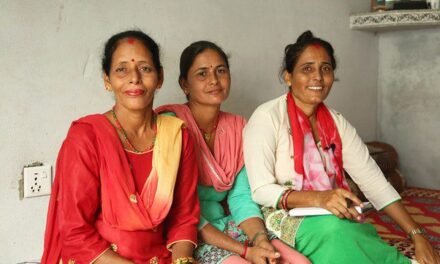This blog was written by Ian Attfield (UK FDCO, Girls’ Education Challenge), Chris Henderson (UNICEF Consultant and Columbia University) and Dr. Mumtaza Abdurazzakova (Save the Children). It was originally published on the Girls’ Education Challenge website on 24 May 2021.
In the summer of 2020, just a few months after the COVID-19 pandemic had spread around an under-prepared world, a group of girls’ education activists, researchers and practitioners came together to review the situation and share their initial responses to school closures in South Asia.
This collaboration, led by the Girls’ Education Challenge (GEC) and the UNICEF Gender and Education Sections, took its form as Leave No Girl Behind – a series of webinars which are summarised in this Thematic Review.
The initiative led to the development of the evidence-based Framework and Standards for Gender Responsive Education in the Context of COVID-19 to guide regional policymakers’ and practitioners’ priorities over the critical weeks and months that followed.
Early evidence coming out of South Asia raised alarms. For example, despite high rates of access to mobile phone technology in Pakistan (78%) Bangladesh (86%) and Afghanistan (84%), comparatively few girls and women have access to their own devices. In terms of internet access, girls and women are 70% less likely to access the online content compared to boys and men. In addition, data showed that only 7% of all children in South Asia were able to access learning materials online during the early phases of school lockdowns. Considering this, the promotion of digital or online solutions for learning continuity was problematic.
International NGOs and governments projected that the longer schools remained closed, the higher the number of girls not re-engaging in education after lockdowns might be. In Nepal, Room to Read projected that this number could reach as high as 50%. As the bubble chart below shows, South Asian countries (in orange) have experienced the most days of school closures while at the same time having the lowest rates of access to online and digital learning technologies.
For this reason, the Framework and Standards for Gender Responsive Education in the Context of COVID-19 promotes low-tech and no-tech solutions to address four key issues:
- The disproportionate impact of school closures on already marginalised girls
- The need to urgently return all girls and boys to school
- The need to address the digital gender divide to ensure equal access to technology
- The need for investments in gender-responsive teachers to ensure girls’ learning continuity
Across 245 progressive standard priorities, the framework also promotes collaboration between education, health and child protection services, noting that learning continuity and a safe return to school cannot be achieved by education sector actors alone. Could this framework inform a more girl-centric, inter-connected and cross-sectoral way of working between government, non-governmental and civil-society actors?
Fast forward to early 2021 and South Asia’s COVID-19 situation was looking comparatively positive. The pandemic’s health impacts in South Asia had been less severe than anticipated and cautiously, but steadily, schools were re-opening across the region. The debate therefore shifted to mitigating learning loss, addressing the inequities arising from the digital gender divide and understanding the psycho-social consequences of lockdowns. At this time, we asked ourselves whether or not the dire prediction that a further 20 million secondary school-age girls would be pushed out of school was realistic or overblown?
To explore this question, we developed this presentation for the Comparative and International Education Society Conference (CIES). We sought to critique the current situation and corresponding regional response. As well as presenting a regional review of girls’ learning continuity, we presented two illustrative case studies which centred around the STEM-II project in Western Nepal and the STAGES project in Afghanistan.
To reduce COVID-19 related risks, the STAGES team in Afghanistan introduced a remote 12-week, gender-responsive professional development initiative for teachers. This initiative supported female teachers to continue delivering inclusive and child-centered remote education learning during school closures and to prepare for school reopening and learning recovery. Delivered via mobile phone using interactive voice response (IVR) technology, a total of 408 Save the Children teachers were registered for remote training and the level of engagement was above 70% each week.
Additional support was offered through remote mentoring and teacher learning circles, which provided critical spaces for teachers to reflect on and share successful teaching practices. Topics addressed included:
- how teachers could protect themselves and students from COVID-19
- how to develop effective work plans in the context of school lockdowns
- how to distribute and use the home-based learning materials and other resources such as library books during lockdowns
- how to safeguard children during school closures and communicate pandemic-related updates in their area.
Survey evidence suggests that all STAGES students remained engaged in their education throughout lockdown and, as interviews reveal, most were encouraged by parents and teachers to keep studying. Significantly, 90% of STAGEs students are first-generation learners and their parents’ prioritisation of continuous learning during closures is a powerful example of success in raising awareness of girls’ education importance.
In Nepal, the Mercy Corps STEM-II project worked with around 9,000 girls from marginalised communities to accelerate learning in science, maths, English and Nepali. Due to COVID-19, significant adaptations to the project had to be made to ensure that learning and psycho-social support could continue despite a tight country-wide lockdown. Adaptations included radio-based learning revision and psycho-social support services, the home delivery of hygiene and sanitary kits, and the distribution of paper-based learning materials.
A survey revealed mixed insights in terms of COVID-19’s impact on girls’ education. Concerningly, 90% of respondents stated that COVID-19 has negatively impacted their future aspirations and 70% stated that they are losing interest in their studies due to lockdowns. At the same time, 85% reported that they can cope with the challenges COVID-19 presents and 70% girls were confident in their ability to guide their own learning, either independently or with peers. Positively, 86% of students still achieved improvements in their learning across all STEM subjects over the lockdown period.
As the CIES conference approached in April 2021, it became increasingly apparent that a second COVID-19 wave was hitting South Asia hard. On the day we presented, parts of Nepal re-entered lockdown, around the time the new academic year should have resumed, and schools closed once again. The lessons learned from the past year thus became all the more profound and urgent.
One lesson is the vital importance of establishing and sustaining alternative and no-tech/low-tech methods for engaging girls and girls’ families during school closures. Evidence shows that regular engagement offers possibilities for protection and mental well-being support, as well as enabling the continuity of teaching and learning.
It is still too early to tell whether the long-term consequences of COVID-19 will result in a generation of girls and boys who permanently drop-out of school. World Bank data coming out of Pakistan suggests that the older girls and boys are, the higher the probability is that they will not re-engage in education once schools reopen. The gender difference is small, but still has the potential to undo over a decade of progress in girls’ educational parity. This possibility places further impetus on governments to maintain their investments and efforts on adolescent girls’ learning and development at this time, too.
Across South Asia, what is striking is the continued use of school closures as a first response to mitigate the spread of COVID-19; this is despite limited evidence on COVID-19 transmission being spread primarily via schools or it is harm to young people. This approach insufficiently recognises the devastating impacts of halting education for a generation of adolescent girls, especially for the poorest and most marginalised. We therefore need to continue working together with urgency to create solutions that keep education opportunities in place, whilst also protecting communities from the direct and in-direct consequences of the pandemic.

